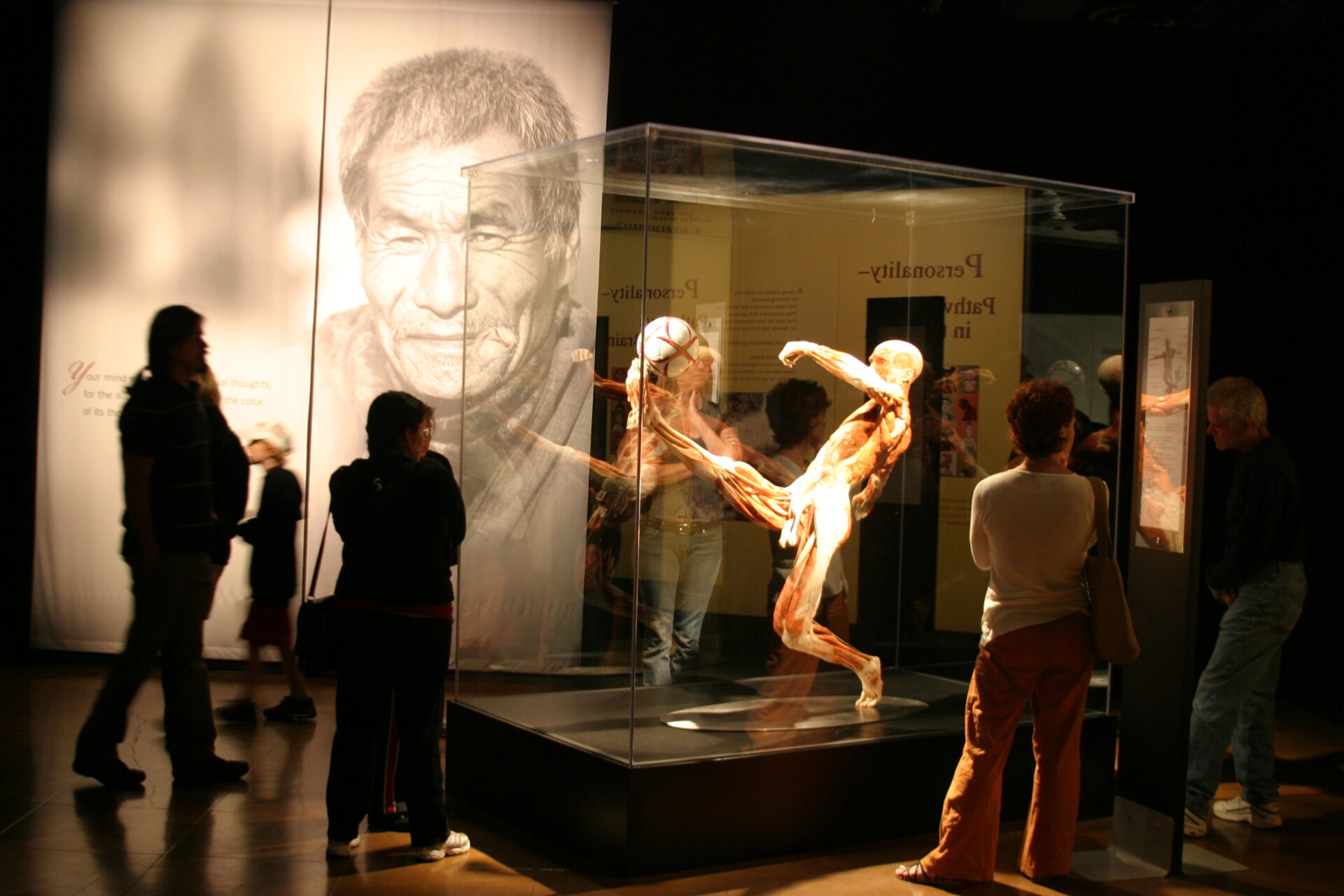
Photo Courtesy of Creative Commons user Patty Mooney
The “BODY WORLDS & The Cycle of Life” exhibition at the Oregon Museum of Science and Industry (OMSI) is showing until Oct. 4 and is in strong competition for the most morally objectionable thing in Portland right now. For entry to one of the most bizarre exhibits museums have to offer, tickets only cost $20. The real question is: should you go?
When you walk into the exhibition, you are not alone. Everywhere you turn there are corpses on display both whole and in parts. The majority of them are without skin and many are cut open to display their innards. Their bodily systems and organs have been separated from their persons and embalmed through plastination, a process in which the bodies have a plastic run through them that solidifies and preserves them. To further their dehumanization, they are referred to exclusively as “plastinates” in an attempt to distance them from the living human beings that they were. Through the display of real human bodies, this exhibition claims to highlight human anatomy.
I visited this exhibit, which has been touring internationally since the mid-1990s, as a child. I remember being unsettled and unable to comprehend the existential crisis that the macabre display provoked within me. In retrospect, my response was, perhaps, indicative of the deeper issues within the exhibition.
The soul of this exhibit does not reside in what can be visibly seen in the displays. It is not contained within the quirky poses that the dead have been put in. This exhibit exists beyond the veil of the surface and the public. To focus on the crowds of families or on the lighthearted nature that “BODY WORLDS” tries to maintain would be disingenuous and complicit in the atrocity that it really is.
This exhibit raises many necessary questions from the start. Were the bodies obtained ethically? Even if they were acquired ethically, were they handled with respect? Even if they were, is displaying them ethical? In the best circumstances, the exhibit would still stand on dubious ground, yet here the answer to all of these questions is a resounding “no.”
The creator of this exhibit, Dr. Gunther von Hagens, is deeply tied to the work. His name is displayed prominently in the title on OMSI’s website. He developed the technique of plastination. In the past, he had to return multiple bodies to China because they showed evidence of having been executed. In fact, most of the bodies are of unclear origin. In 2006, NPR learned that there is no paper trail directly linking any consenting individual to being displayed in this exhibit. Given the evidence supplied by NPR, it is possible that the bodies are those of the poor, homeless or imprisoned. An article by the US National Library of Medicine further details that von Hagens may have lied to get them, falsifying his credentials in his negotiations to procure the bodies. Before von Hagens acquired his bodies from China, he had acquired them from the former Soviet Union until 56 bodies and hundreds of brain samples were confiscated by customs as the seller had been charged with procuring the bodies illegally.
Beyond how the bodies were obtained, what von Hagens does with them is disturbing. It is one thing to display unconsenting human remains, but to display them in a way that disregards that they were once living human beings is repugnant. In a previous exhibit, a massive controversy ensued after he displayed two people posed in a sexual act. In response to the exhibit being banned under decency laws, he also sawed the bodies in half. Von Hagens faced backlash after performing an autopsy in front of a live audience in 2002 that was also televised.
This exhibit dehumanizes those who were already deeply marginalized while they were alive. Although people have spoken out about this in the past, it seems that it has been overlooked for the most part in the news, and “BODY WORLDS” continues to be exhibited and marketed towards children and their families. These problems go further unaddressed in that OMSI does not discuss the controversies surrounding the exhibit directly. Furthermore, since these controversies are not widespread knowledge, most people going in are unwittingly supporting these actions.
The existence of “BODY WORLDS” is an immoral objectification of people who had no choice to be treated in the way that they have been. The exhibit claims to be for the purpose of education, and while its effectiveness to that end can be argued, the following question still remains: at what cost do we allow such things to happen for the sake of education? This is an exhibit that must be carefully researched before attending. It is ultimately up to the individual to decide whether or not “BODY WORLDS”is a worthwhile experience. If society reacts critically, this may be one of the last chances to see it.
Subscribe to the Mossy Log Newsletter
Stay up to date with the goings-on at Lewis & Clark! Get the top stories or your favorite section delivered to your inbox whenever we release a new issue.

Leave a Reply